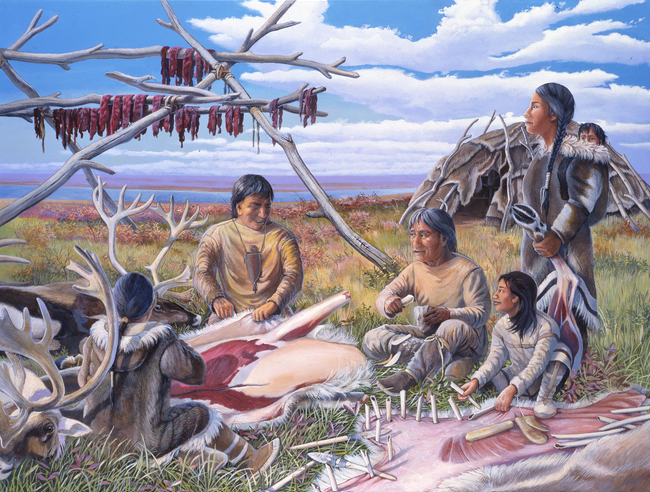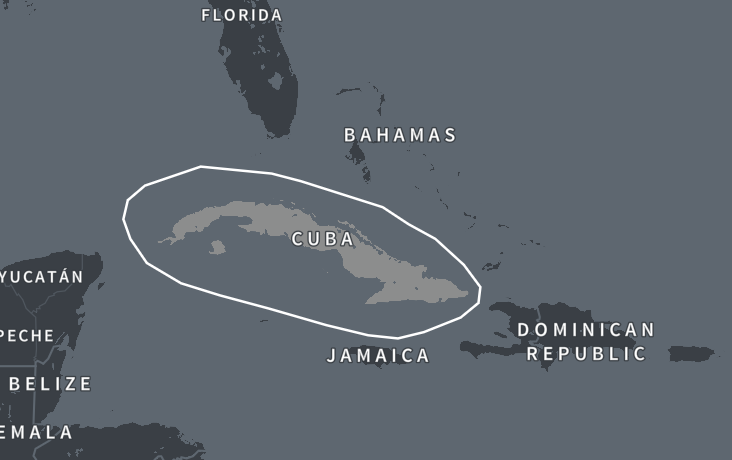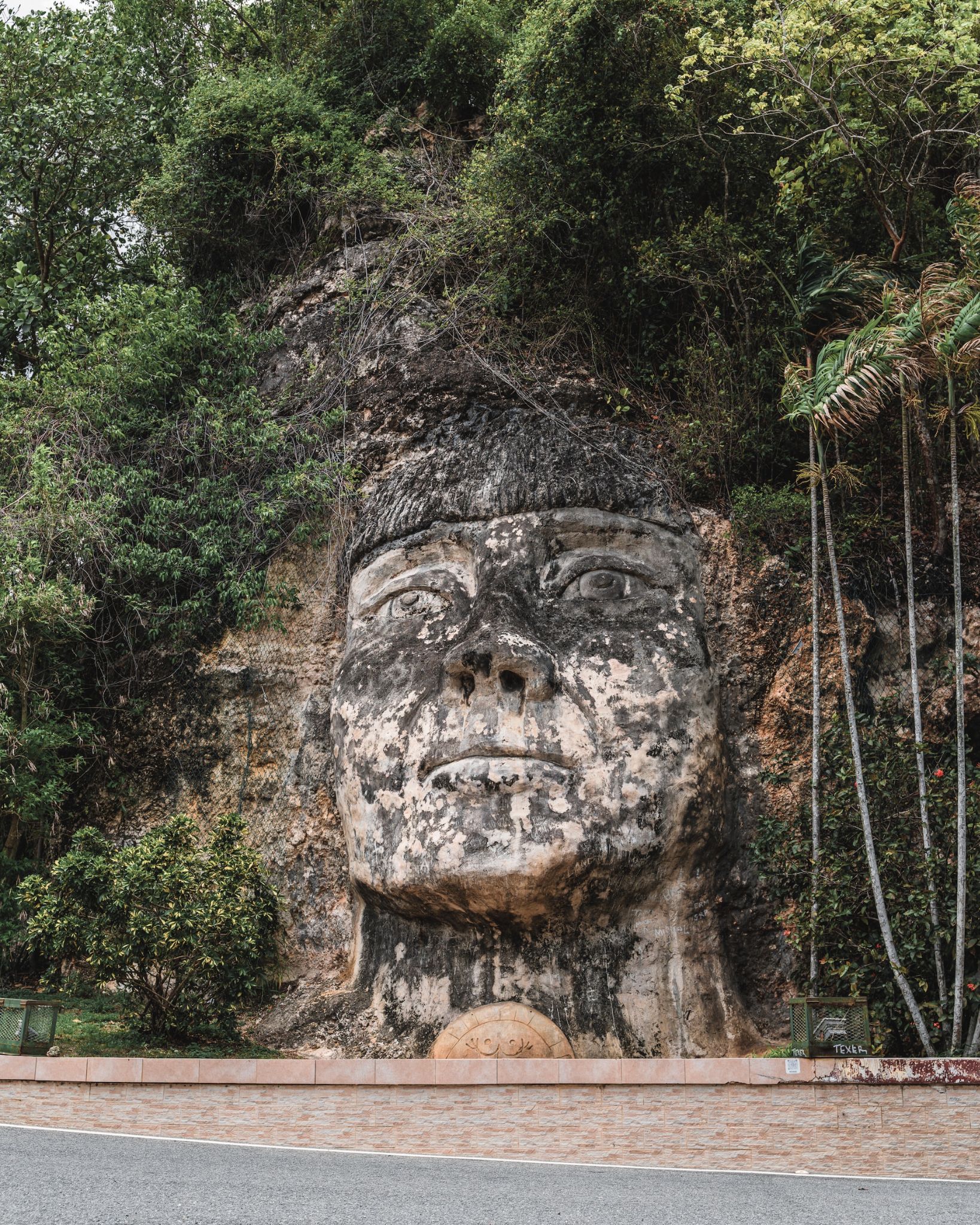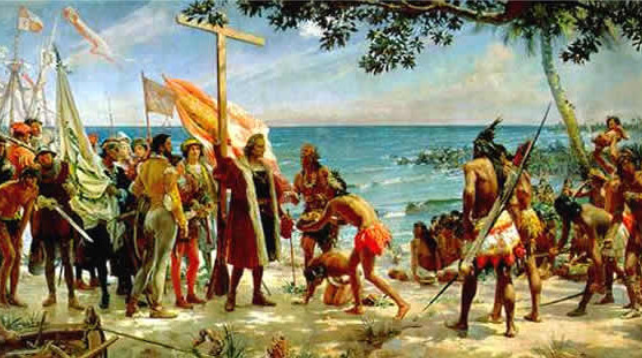What is Indigenous Americas-Cuba DNA Ethnicity on Ancestry?
In this article we will be looking more closely at the Indigenous Americas Cuba DNA region. We will look at where it is and who the indigenous people of that region were. So to find out more about your DNA ancestors of this region read on.
History of Humans in the Americas
The Land Bridge
Although there is no exact date for when humans first arrived in the Americas there are several prevailing theories. The most common one of course being the land bridge theory. During the last ice age between 19,000 – 8700 BC, sea levels were 100 feet below the modern-day. This was due to vast quantities of water being frozen in glacier form.
During that last ice age, the Bering sea as we know it today was actually a land bridge reaching all the way to Siberia. It is thought that around 14,000 years ago stone age hunters and gatherers followed game across this land bridge and became the first humans to settle within the Americas.

It is also believed that gradually these settlers then headed deeper into the Americas, traveling south in small groups. Due to the ongoing effects of the ice age these groups remained small because conditions were not conducive with large settlements or nomadic tribes.
Today's Indigenous peoples likely descend from a now-vanished ancient group known as the Paleo-Siberians. In DNA testing Indigenous Americas DNA has little in common with modern-day Siberians but in 2019 a 10,000 year old skeleton found in Siberia did show notable similarities to modern-day Native peoples in the Americas.
Traveling by Sea
There exist several theories whereby early indigenous people of the Americas may have interacted and bred with oceanic explorers prior to the arrival of Columbus. In DNA tests taken of inhabitants of Rapa Nui (Easter Island), these people showed small sections of Native American DNA.
Easter Island is over 2000 miles away from the closest contact with the Americas which would be the coast of Chile. The DNA suggests that these Easter Islanders had a Native American Ancestor from around 1280 – 1495 A.D. It is therefore likely these seafaring Polynesians made the trip to the Americas and some may have stayed.
Recent archaeological evidence also indicates that Vikings were present in the United States around the 11th century A.D. It is reasonable to assume there would be a possibility that some may have settled and assimilated into local tribes.
Indigenous Americas Cuba DNA Region
The Indigenous Americas Cuba region unsurprisingly falls on the country of Cuba and the small islands that surround it. This is a small DNA region which tribally speaking remained distinct from other surrounding Islands such as Jamaica and the Bahamas.

Indigenous Cuba History
Aside from being one of the last geographic strongholds of the Caribbean ground sloth which may have lived on the island up until 2,660 BC, this region was home to two distinct tribal groups. These were the Taino and the Guanahatabey.
Taino
The Taino are believed to have arrived on the Island we know as Cuba at least 5,000 years ago from mainland South America. There is much discussion as to exactly where in South America the Taino first arose, some suggesting they may descend from groups in the Amazon basin while others believe they may have Andean roots.

This group was at one time widespread in the Caribbean with populations not only in Cuba but The Dominican Republic, Jamaica, Haiti, Puerto Rico and the Bahamas. They had an agricultural society and some experts suggest that they are an extinct people. There are however many people who identify as Taino today living in the region.
Guanahatabey
This enigmatic group who were found living alongside the Taino in Cuba when the Spanish Arrived in the late 15th century are little understood. The Spanish tried to communicate with this group using Taino interpreters but could learn very little about them.
Any stories about their origins came from Taino tribes people so they are often not considered reflective of the dynamics of this secretive society. It is known that they dominated the western end of the island of Cuba.
The Guanahatabey were a hunter-gatherer group primarily and were seemingly widespread on other Caribbean islands based on archaeological finds. Indications are that the Cuban population may have been the last of a once widespread group who probably predated the Taino in the region.
On his second voyage Columbus visited the Guanahatabey section of the island but was not able to communicate. The first recorded mention of the group was in 1514 and they were described as cave dwellers whose main diet was fish.
The group soon after disappeared leaving their origins a mystery although their DNA likely lives on throughout the Caribbean and likely more heavily so in Cuba. This was the last place they were known to live alongside the Taino or for that matter anywhere else.
The Spanish
The first Spanish settlement on the island we now call Cuba was in 1511 and would be quickly followed by several more. The local Taino tribe was quickly forced into labor via the encomienda system. This system allowed them to use any non Christian individuals as forced labor in a region they had conquered.
How Did You Inherit Indigenous Americas Cuba Region DNA?
It is important to note that due to the small number of original humans that likely crossed the land bridge and thousands of years of isolation, Indigenous DNA is very distinct. Over thousands of years it has changed enough however to pinpoint populations with common DNA such as the Indigenous Americas Cuba region.
As mentioned many individuals from South and Central America may have some Indigenous DNA based on intermarriage between early Spanish settlers and the local native groups in this case the Taino and possibly the Guanahatabey.

Depending on how high your percentage of Indigenous Americas Mexico DNA is, its origins can vary. If you have a high percentage you may have a recent ancestor who was almost 100% Indigenous. Often if this is the case you would likely have some idea of who this was.
In the case of lower percentages of Native DNA, it might be an indication of a more distant unknown indigenous ancestor. In order to discover this connection, you may have to do some deep research to try and pinpoint at what point that DNA entered your family tree.
Final Thoughts
The Island we know today as Cuba has seen human habitation for thousands of years and when Columbus arrived in the 15th century there were only two distinct native peoples, the Taino and the Guanahatabey. Still living a basic lifestyle these two groups did not share a language and the Guanahatabey may have been the last of a once more expansive peoples of the Caribbean.
To this day some peoples of the Caribbean claim Taino ancestry but the Guanahatabey either disappeared or were fully assimilated shortly after the Spanish arrival. Those with Indigenous Americas Cuba DNA may well trace their lineage to a combination of these two Cuban tribes.
Two cultures sharing a small island but not their language or culture. It seemed to work for them until of course Columbus and the Spanish arrived.
Link To or Reference This Page
We spent a lot of time downloading, cleaning, merging, and formatting the data that is shown on the site.
If you found the data or information on this page useful in your research, please use the tool below to properly cite or reference Name Census as the source. We appreciate your support!
-
<a href="https://namecensus.com/blog/what-is-indigenous-americas-cuba-dna-ethnicity-on-ancestry/">What is Indigenous Americas-Cuba DNA Ethnicity on Ancestry?</a>
-
"What is Indigenous Americas-Cuba DNA Ethnicity on Ancestry?". NameCensus.com. Accessed on May 2, 2024. https://namecensus.com/blog/what-is-indigenous-americas-cuba-dna-ethnicity-on-ancestry/.
-
"What is Indigenous Americas-Cuba DNA Ethnicity on Ancestry?". NameCensus.com, https://namecensus.com/blog/what-is-indigenous-americas-cuba-dna-ethnicity-on-ancestry/. Accessed 2 May, 2024
-
What is Indigenous Americas-Cuba DNA Ethnicity on Ancestry?. NameCensus.com. Retrieved from https://namecensus.com/blog/what-is-indigenous-americas-cuba-dna-ethnicity-on-ancestry/.
